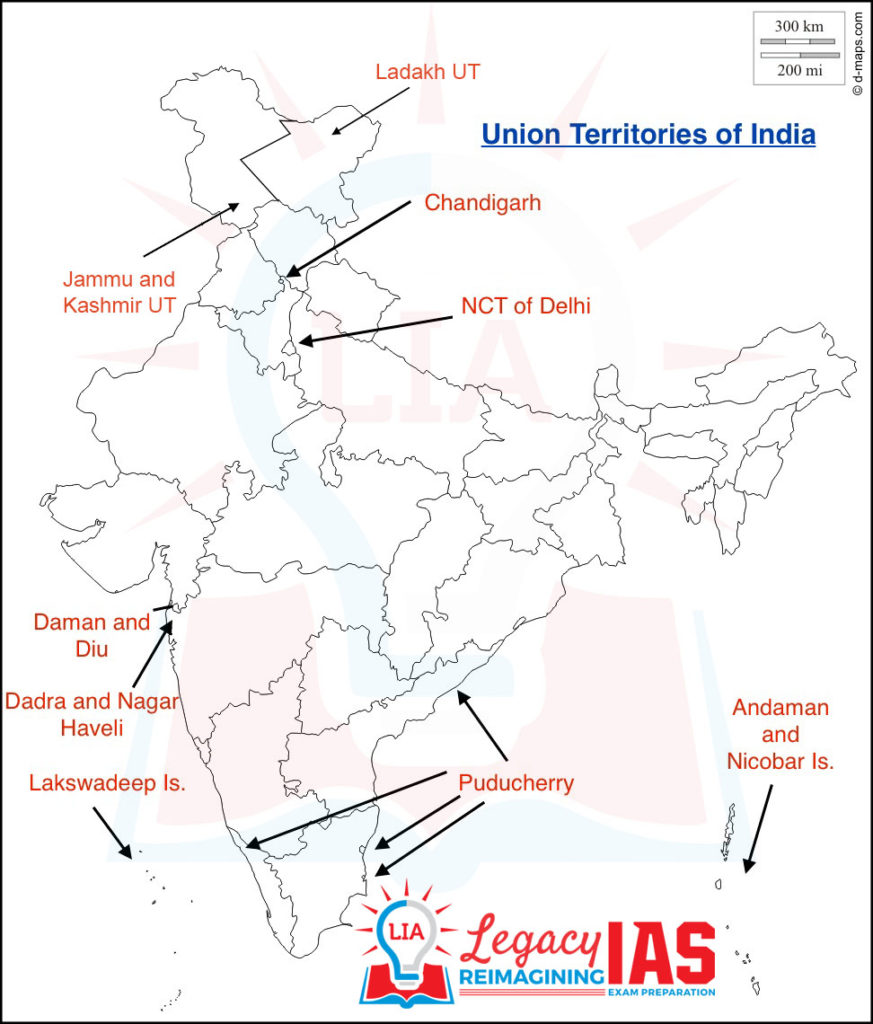Focus: GS-II Governance, Prelims
Why in news?
- The Madras High Court on 12th March 2020, said a government is “a trustee for the little man who should not have a perception that the running of the government is a gigantic conspiracy”.
- It held that the role of Puducherry’s Lieutenant Governor and that of an elected government in the Union Territory were intertwined as per law, and therefore they were expected to act in unison and not in division.
The views of the High Court on L-G and Government
- The high court held that the L-G could not interfere with its day-to-day functioning by fostering a “basically incorrect” opinion that the legislature of the Union Territory was on a par with that of a State.
- The view of the learned single judge suffers from a basic fallacy of drawing a parallel on the basis of expected notions of democracy and republicanism vis-a-vis the status of elected legislature of a Union Territory and that of a State.
- This cannot be done by a judicial pronouncement and has to be through a legislative process by the appropriate legislature.
- For the time being, there is no such law that may equate or put them at par
Lieutenant-General
- In the Republic of India, a lieutenant governor is the constitutional head of five of the eight union territories.
- The lieutenant governor is appointed by the President of India for a term of five years, and holds office at the President’s pleasure.
- Since the union territories of Delhi, Jammu and Kashmir and Puducherry have a measure of self-government with an elected legislature and council of ministers, the role of the lieutenant governor there is mostly a ceremonial one, akin to that of a state’s governor.
- In Andaman and Nicobar Islands and Ladakh however, the lieutenant governor holds more power, being both the head of state and head of government.
- The other three union territories—Chandigarh; Dadra and Nagar Haveli and Daman and Diu; and Lakshadweep—are governed by an administrator.
- Unlike the lieutenant governors of other territories, they are usually drawn from the Indian Administrative Service or Indian Police Service.
- Since 1985 the Governor of Punjab has also been the ex-officio Administrator of Chandigarh.
Union Territories
- A Union territory is a type of administrative division in the Republic of India.
- Unlike the states of India, which have their own governments, union territories are federal territories governed directly by the central Government of India.
More about Union Territories in India
- As of 2020 there are eight union territories.
- When the Constitution of India was adopted in 1949, there was only one Part D state: Andaman and Nicobar Islands.Three more, the Delhi, Chandigarh and Lakshadweep were formed by separating each territory from pre-existing states.
- Another two (Dadra and Nagar Haveli and Daman and Diu and Puducherry) were formed from acquired territories that formerly belonged to colonial powers (Portuguese India and French India).

Control over Union Territories
- The Parliament of India can pass a law to amend the constitution and provide a Legislature with elected Members and a Chief Minister for a union territory, as it has done for Delhi and Puducherry.
- In general, the President of India appoints an administrator or lieutenant governor for each UT.
- Due to existence of union territories, many critics have resolved India into a semi-federal nation, as the central and state governments each have their own domains and territories of legislation.
- Union territories of India have special rights and status due to their constitutional formation and development.
- The status of “union territory” may be assigned to an Indian sub-jurisdiction for reasons such as safeguarding the rights of indigenous cultures, averting political turmoil related to matters of governance, and so on.
- These union territories could be changed to states in the future for more efficient administrative control.
Details of some Union Territories
- Delhi, Puducherry and Jammu and Kashmir operate differently from the other six. They were given partial statehood and Delhi was redefined as the National Capital Territory of Delhi (NCT) and incorporated into a larger area known as the National Capital Region (NCR).
- Delhi, Puducherry and Jammu and Kashmir have an elected legislative assembly and an executive council of ministers with partially state-like function.
- In August 2019, the Parliament of India passed Jammu and Kashmir Reorganisation Act, 2019. The act contains provisions to reconstitute the state of Jammu and Kashmir into two union territories, one to be eponymously called Jammu and Kashmir, and the other Ladakh on 31 October 2019.
- In November 2019, the Government of India introduced legislation to merge the union territories of Daman and Diu and Dadra and Nagar Haveli into a single union territory to be known as Dadra and Nagar Haveli and Daman and Diu.
Revenue/Tax of the Union Territories
- The Constitution does not stipulate how tax revenue is to be devolved to the union territories, unlike for the states.
- The funds devolution to union territories by the union government have no criteria where all the revenue goes to the union government.
- Some union territories are provided more funds, while others are given less, in an arbitrary manner by the union government.
- As union territories are directly ruled by the union government, some union territories get more funds from the union government than entitled on per capita and backwardness basis when compared to states.





